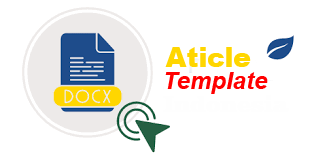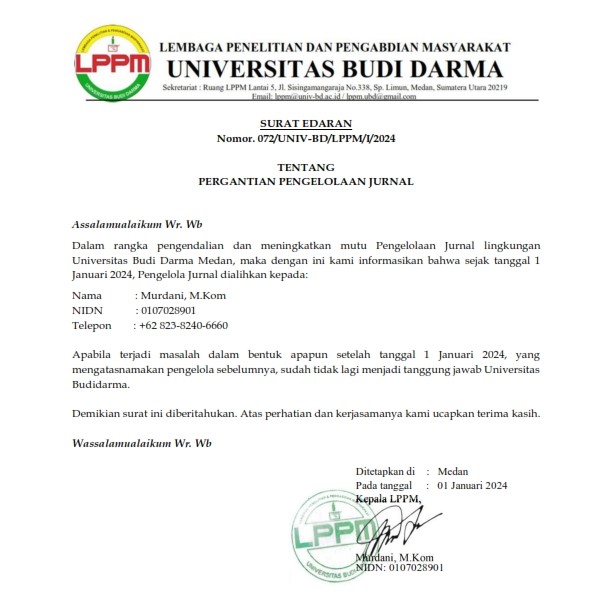Pemanfaatan Model ISO 9126 Dalam Pengukuran Kualitas Perangkat Lunak Sistem Pengolahan E-Surat
DOI:
https://doi.org/10.30865/jurikom.v9i6.5251Keywords:
Software Engineering, Software Quality, Software Testing, ISO 9126, Black Blox TestingAbstract
The development of information technology impacts the use of technology in all fields and the many applications created to support the performance of companies, schools and even MSMEs. Today's very high-end app creation is not accompanied by good-quality support. Good software quality is one of the factors determining a software's success. The software created must be tested for software quality to reduce the loss of software procurement costs, time, and resources. To obtain good software quality, developers must carry out extra activities and a long process by implementing the ISO 9126 model. Six factors are used to determine software quality: functionality, reliability, usability, efficiency, portability, and portability. Keluarahan Sambikerep, Kecamatan Sambikerep, Surabaya, East Java, has developed an E-Letter application to serve the public in administrative activities. Still, the E-Letter application has not been tested for software quality. Researchers conduct quality testing of E-Letter software to ensure that the application complies with International Standards for software quality. By knowing the quality of the E-Letter software, it will automatically have an impact on the services provided by Kelurahan. Researchers use three factors from ISO 9126: functionality, usability, and efficiency. Researchers used black box testing with the equivalence partitions technique to test the E-Letter software. Researchers conducted 30 black box tests on the E-Letter application feature, namely the Login feature, citizen data submission form, birth certificate submission form, death certificate application form, citizen data report form, birth certificate report form, and death report form. From the ISO 9126 Implementation Process for the E-Letter application, an average rating of 81,667% or rounded up to 82% is obtained, which means that the E-Letter application has outstanding quality
References
J. C. Indrinal, “Senior High School Students’ Awareness and Literacy on Computer Software Applications,†International Journal of Educational Management and Development Studies, vol. 3, no. 1, pp. 39–51, 2022.
A. Rachman, S. Rochimah, and D. Sunaryono, “Komentar Semi Otomatis Untuk Memudahkan Pemahaman Pada Bahasa Pemrograman Java,†Jurnal Ilmiah Nero, vol. 2, no. 3, pp. 145–152, 2016, doi: http://dx.doi.org/10.21107/nero.v2i3.59.
C. E. Yunianto, A. Rachman, and R. R. Putri, “Pengembangan Aplikasi Pendeteksi Kerusakan Sepeda Motor Berbasis Web Menggunakan Model V,†presented at the Seminar Nasional Sains dan Teknologi Terapan IX 2021, 2021. Accessed: Sep. 16, 2022. [Online]. Available: http://ejurnal.itats.ac.id/sntekpan/article/view/2245/1922
I. K. Kirpitsas, “Evolution towards Hybrid Software Development Methods and Information Systems Audit Challenges,†Journal of Software, pp. 316–363, 2022, doi: https://doi.org/10.3390/software1030015.
H. R. Hidayat and D. Hamdani, “Design of Web-Based Acceptance of New Students (PPDB) In SMA YAS Bandung,†IJISCS (International Journal of Information Systems and Computer Science), vol. 5, no. 2, pp. 100–110, 2021, doi: https://doi.org/10.56327/ijiscs.v5i2.
M. D. R. Pinto, W. Widodo, and A. Rachman, “Rancang Bangun Aplikasi Pemesanan Air Bersih Berbasis Android Dengan Menggunakan Model Prototype,†INTEGER: Journal of Information Technology, vol. 5, no. 1, pp. 42–48, 2020, doi: https://doi.org/10.31284/j.integer.2020.v5i1.905.
E. Santoso, S. Sulistyowati, and A. Rachman, “Rancang Bangun Game Adventure Gyro Berbasis Android Menggunakan Model Rational Unified Process (RUP),†INTEGER: Journal of Information Technology, vol. 1, no. 2, pp. 10–21, 2016, doi: https://doi.org/10.31284/j.integer.2016.v1i2.61.
S. Kadri, S. Aouag, and D. Hedjazi, “MS-QuAAF: A generic evaluation framework for monitoring software architecture quality,†Information and Software Technology, vol. 140, pp. 1–20, 2021, doi: https://doi.org/10.1016/j.infsof.2021.106713.
V. Santos, H. Mamede, C. Silveira, and L. Reis, “Methodology for Introducing Creativity in Requirements Engineering,†in CENTERIS - International Conference on ENTERprise Information Systems / ProjMAN - International Conference on Project MANagement / HCist - International Conference on Health and Social Care Information Systems and Technologies 2021, 2022, vol. 196, pp. 27–35. Accessed: Oct. 29, 2022. [Online]. Available: https://www.sciencedirect.com/science/article/pii/S1877050921022080
M. Haleem, Md. F. Farooqui, and M. Faisal, “Tackling Requirements Uncertainty in Software Projects: A Cognitive Approach,†International Journal of Cognitive Computing in Engineering, vol. 2, pp. 180–190, 2021, doi: https://doi.org/10.1016/j.ijcce.2021.10.003.
E. Jharko, “Ensuring the Software Quality for Critical Infrastructure Objects,†IFAC-PapersOnLine, vol. 54, no. 13, pp. 499–504, 2021, doi: https://doi.org/10.1016/j.ifacol.2021.10.498.
R. D. Apriyanto and H. P. Putro, “TINGKAT KEGAGALAN DAN KEBERHASILAN PROYEK SISTEM INFORMASI DI INDONESIA,†in Seminar Nasional Teknologi Informasi dan Komunikasi 2018, Yogyakarta, 2018, pp. 395–402.
R. Hidayat, A. Arwan, and A. P. Kharisma, “Pengembangan Sistem Manajemen Proyek Perangkat Lunak (Studi Kasus: CV. Karya Studio Teknologi Digital),†Jurnal Pengembangan Teknologi Informasi dan Ilmu Komputer, vol. 5, no. 2, pp. 797–806, 2021.
K. P. Ramulu and R. Murhtyr, “Importance of Software Quality Models in Software Engineering,†International Journal of Engineering Technologies and Management Research, vol. 5, no. 3, pp. 200–218, 2018, doi: 10.5281/zenodo.1218182.
P. Kokol, “Software Quality: How Much Does It Matter?,†Journal Electronics, vol. 11, pp. 1–11, 2022, doi: https://doi.org/10.3390/electronics11162485.
J. Madler, I. Viedt, and L. Urbas, “Applying quality assurance concepts from software development to simulation model assessment in smart equipment,†Computer Aided Chemical Engineering, vol. 50, pp. 813–818, 2021, doi: https://doi.org/10.1016/B978-0-323-88506-5.50127-3.
Nofiyati, Nofiyati, A. K. Nugroho, and B. Wijayanto, “EVALUATION OF THE QUALITY OF ACADEMIC INFORMATION SYSTEM UNSOED USING ISO 9126 AND MEAN OPINION SCORE (MOS),†Jurnal Teknik Informatika (JUTIF), vol. 3, no. 3, pp. 771–779, 2022, doi: https://doi.org/10.20884/1.jutif.2022.3.3.X.
M. I. Nur, M. S. Lamada, and M. Riska, “RANCANG BANGUN SISTEM INFORMASI KEGIATAN KEMAHASISWAAN JURUSAN TEKNIK INFORMATIKA DAN KOMPUTER BERBASIS WEB,†Universitas Negeri Makasar, pp. 1–12, 2021.
A. Andreansyah, A. Rachman, and R. R. Putri, “Implementation of Incremental Models on Development of Web-Based Loan Cooperative Applications,†International Journal of Education, Science, Technology and Engineering, vol. 3, no. 1, pp. 26–34, 2020, doi: https://doi.org/10.36079/lamintang.ijeste-0301.105.
I. M. Sabpril and A. A. Alfin, “Analisis Efektivitas Sistem Informasi Menggunakan ISO/IEC 9126 dan MetodeAHP (Analytical Hierarchy Process) Pada PT ZYS,†JTECS: Jurnal Sistem Telekomunikasi Elektronika Sistem Kontrol Power Sistem & Komputer, vol. 2, no. 2, pp. 189–196, 2022, doi: https://doi.org/10.32503/jtecs.v2i2.2716.
M. Jamil, S. F. Saputra, M. I. Wahid, and D. Riana, “Evaluasi Metode ISO/IEC 9126 Pada Kinerja Website Sistem Informasi Akademik Perguruan Tinggi,†Informatika Mulawarman : Jurnal Ilmiah Ilmu Komputer, vol. 16, no. 1, pp. 27–33, 2021, doi: http://dx.doi.org/10.30872/jim.v16i1.5209.
A. Aprian, D. Sebastian, and R. Restyandio, “Analisa dan Perancangan Ulang Antarmuka Aplikasi Teman Diabetes Terhadap Lansia,†AITI: Jurnal Teknologi Informasi, vol. 19, no. 1, pp. 67–86, 2022.
A. U. H. Alfiani, U. F. Wulandari, and N. Nadlir, “Implementasi Sistem Informasi Manajemen Guna Meningkatkan Kinerja Sekolah Pada Masa Pandemi Covid 19 Di Sman 1 Gondang Mojokerto,†Al-Idarah: Jurnal Kependidikan Islam, vol. 11, no. 2, pp. 202–214, 2021, doi: https://doi.org/10.24042/alidarah.v11i2.9805.
F. H. Zulfallah and S. Hidayatulloh, “Analisis dan Perancangan Sistem Informasi Pendaftaran Magang padaInspektorat Jendral Kementerian Pendidikan dan Kebudayaan,†Jurnal Esensi Infokom, vol. 5, no. 1, pp. 27–35, 2021.
F. I. R. Algipari et al., “Pengaplikasian Sistem Informasi Manajemen Terhadap Performa Pegawai Pada Yogya Junction 8 Cemara,†Jurnal Muhammadiyah Manajemen Bisnis, vol. 3, no. 1, pp. 29–36, 2022.
S. Shodiq, “Peran Sistem Informasi dan Teknologi Informasi terhadap Proses Pembelajaran di Masa Pandemi Covid-19,†JURNAL EDUKASI, vol. 8, no. 1, pp. 17–19, 2021.
R. A. Mukti, E. D. Widianto, and D. Eridani, “Sistem Informasi Jurnal Elektronik Berbasis Web Pada Universitas Diponegoro,†Jurnal TEKNOINFO, vol. 15, no. 1, pp. 38–44, 2021, doi: 10.33365/jti.v15i1.473.
D. C. E. Manalu and A. Rachman, “Rancang Bangun Sistem Informasi Penjualan Batik Berbasis Web Mengunakan Model Incremental,†KERNEL: Jurnal Riset Inovasi Bidang Informatika dan Pendidikan Informatika, vol. 3, no. 1, pp. 41–48, 2022, doi: https://doi.org/10.31284/j.kernel.2022.v3i1.2423.
I. K. Lukianto, I. G. K. A. C. Deva, I. M. A. D. Suarsana, and I. kadek A. Reskiawan, “Sistem Informasi E-commerce Pelestarian Seni Ukir Kayu Tradisional Desa Tegalalang,†KERNEL: Jurnal Riset Inovasi Bidang Informatika dan Pendidikan Informatika, vol. 3, no. 1, pp. 8–13, 2022, doi: https://doi.org/10.31284/j.kernel.2022.v3i1.1868.








